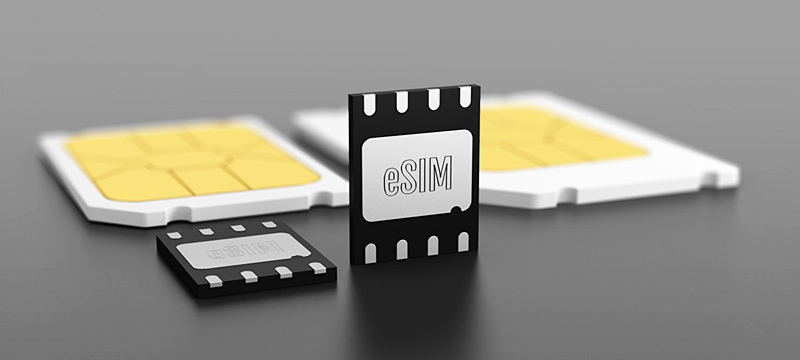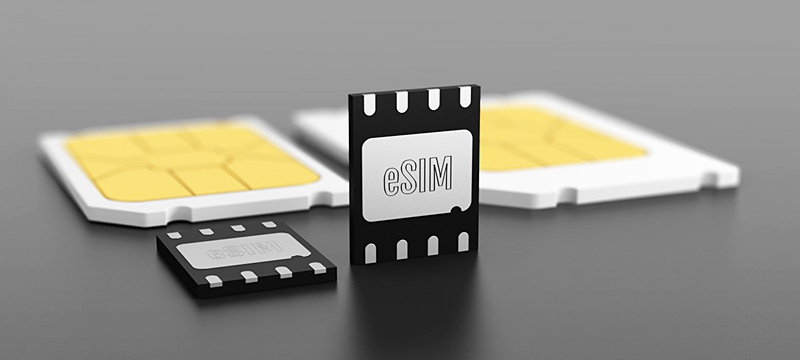

Bertrand Moussel, Chair of the Trusted Connectivity Alliance Board, explores why the release of GSMA’s eSIM for IoT Specifications (SGP.31 and SGP.32) is a game-changing development that promises to accelerate the adoption of eSIM technology and unlock the full, transformative potential of the IoT.
The deployment of low-cost, low-power IoT devices at massive scale, such as smart meters, sensors, asset trackers and smart labels, is transforming entire industries by enabling new use-cases, revealing insights and realising efficiencies. The potential is evident, with McKinsey estimating the economic value to be up to $12.6 trillion globally.
Given the need for trusted, reliable and secure mobile connectivity across many of these emerging use-cases, cellular technologies are increasingly being leveraged to connect IoT devices. Global cellular IoT connections grew by 27% year-on-year in 2022 – significantly outstripping the overall growth rate – to account for nearly 20% of all global IoT connections. Looking ahead, the number of deployed cellular IoT devices is set to continue to increase with the new features and enhancements introduced in the latest 5G standards.
As deployments accelerate, demand for eSIM technology is growing to cut through complexity and promote simplified global connectivity and advanced security. In fact, GSMA Intelligence reports that 83% of organisations identify eSIM as important to the success of future IoT deployments.
Advancing Remote SIM Provisioning for the IoT
A key benefit of eSIM technology is that it is supported by an advanced, mature infrastructure that promotes interoperability and security, as profiles are remotely managed in accordance with GSMA’s well-established Remote SIM Provisioning Specifications for Consumer and M2M Devices.
Yet the growth of the massive IoT ecosystem presents unique considerations due to the increasing number of devices that are limited in terms of bandwidth (network constrained), user interface (UI constrained), and power consumption (power constrained). Network constrained and UI constrained devices present particular and significant challenges, as they cannot be optimally managed using the existing GSMA Consumer and M2M Specifications for Remote SIM Provisioning.
For example, the M2M Specification requires an SMS or HTTPS connection for profile downloads and management, which network-constrained devices cannot support. Similarly, many IoT devices lack a UI to enable an end-user to trigger or approve a profile download (as is required by the Consumer Specification).
Another challenge associated with the M2M Specification is the complex integration processes between different operators, which makes it difficult to switch profiles between providers. While this model works for verticals such as automotive, its inflexibility is unsuited for IoT use-cases. For example, an asset tracker in a shipping container needs to be able to connect to different operators across jurisdictions. Device manufacturers may also not always know the deployment locations of their products. Consequently, during production, they are required to select an operator and establish multiple production lines to address various geographies. The Consumer Specification offers a more streamlined approach, but the limitations of UI constrained devices demands a simpler model dedicated to the IoT.
Introducing GSMA’s eSIM for IoT Specifications
The industry has recognised that enhancing the eSIM infrastructure to meet these specific IoT requirements is crucial and, in response, GSMA has worked with industry stakeholders to develop and publish the eSIM for IoT Specifications (SGP.31 and SGP.32).
The new specifications build upon proven elements of the existing Consumer Specifications, while introducing new, dedicated features to address specific IoT considerations. This includes:
eSIM IoT Remote Manager (eIM): The eIM is a standardised, remote provisioning tool that enables profiles to be downloaded and managed on a single IoT device or a fleet of devices. This removes the requirement for direct consumer interaction or complex, inflexible integrations, simplifying IoT deployments at scale. The eIM also supports lightweight communication protocols to address network-constrained devices.
IoT Profile Assistant (IPA): Within the Consumer Specification, a feature called the Local Profile Assistant (LPA) enables users to download a profile from the operator’s eSIM Subscription Manager platform (known as the SM-DP+). The IoT Profile Assistant (IPA) replaces the LPA used within the Consumer Specification and provides the functions that enable the eSIM to be remotely managed using the existing SM-DP+ platform infrastructure.
Lightweight IoT Minimal Profile: TCA’s Interoperable Profile Package Specification – which is used in every eSIM deployed in the field – standardises the format used for the remote loading of subscriptions onto eSIMs across deployed devices. This enables mobile operators to load interoperable connectivity profiles in an eSIM, regardless of the SIM vendor.
A key update in Version 3.3 of TCA’s Interoperable Profile Package Specification is the definition of a ‘lightweight’ IoT minimal profile to address the growing challenge of remotely managing network constrained IoT devices.
This makes it possible to provision a profile even when bandwidth is very limited, which is crucial to supporting the growing use of eSIM technology to support constrained devices and enable various IoT use-cases and connectivity services. Given these benefits, Version 3.3 is referenced in SGP.32.
Advancing eSIM for IoT
The publication of a dedicated standard for remotely provisioning and managing IoT devices promises to accelerate the adoption of eSIM technology. While it will take some time for the first fully compliant solutions to be launched, Kaleido Intelligence anticipates that over half of active eSIMs across IoT deployments will be compliant with the new specification by 2028.
As deployments scale, TCA is committed to bringing together leading industry stakeholders to shape the ongoing standardisation and enhancement of eSIM technology and the supporting infrastructure. This includes continuing to be a key contributor to GSMA to further guide and support the development of its eSIM-related specifications and testing processes.
The post Why eSIM is set to transform the IoT appeared first on IoT Business News.





























